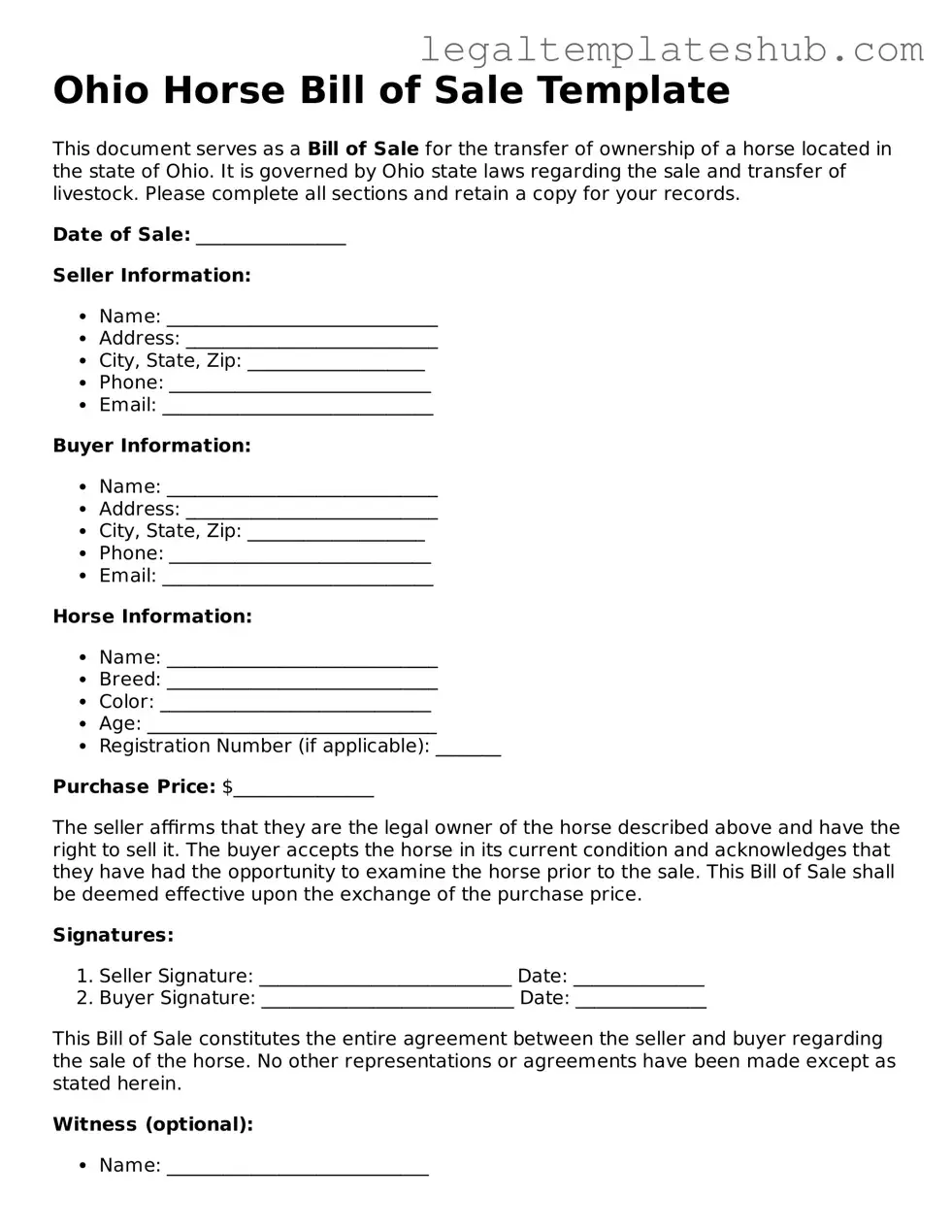Printable Horse Bill of Sale Document for Ohio
The Ohio Horse Bill of Sale form is a legal document that records the sale and transfer of ownership of a horse in Ohio. This form protects both the buyer and the seller by providing a clear record of the transaction. Ensure you have the proper documentation by filling out the form below.
Access Editor
